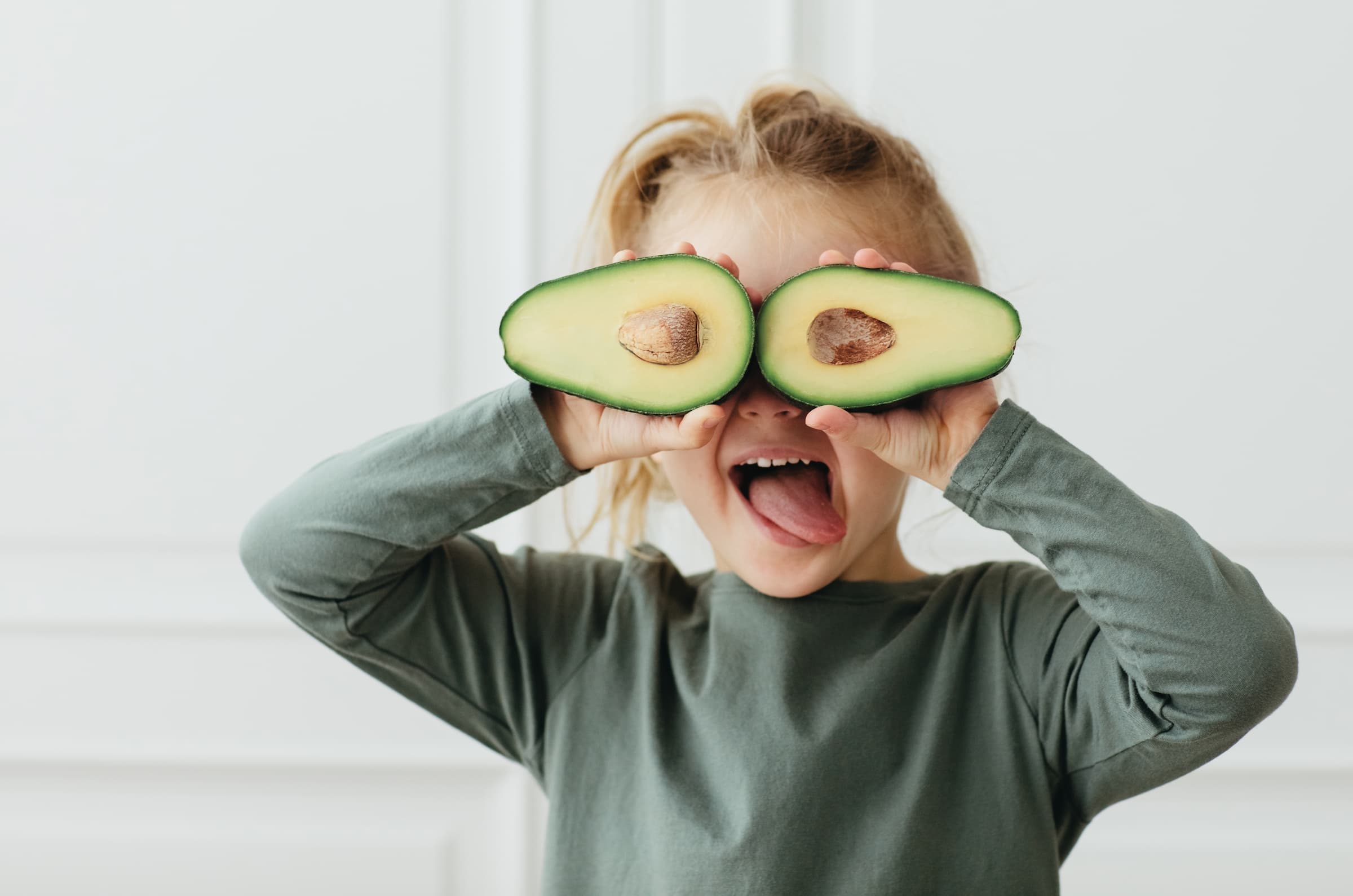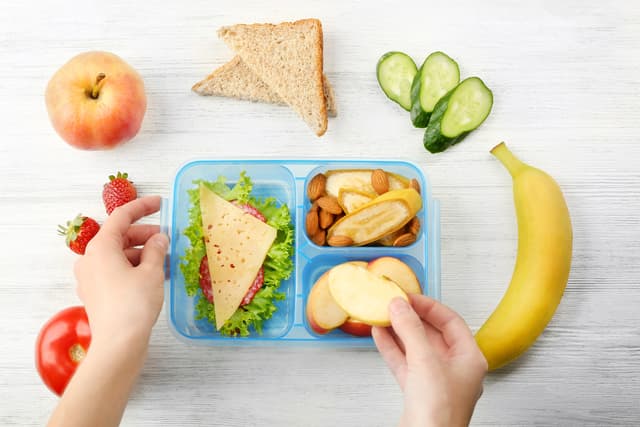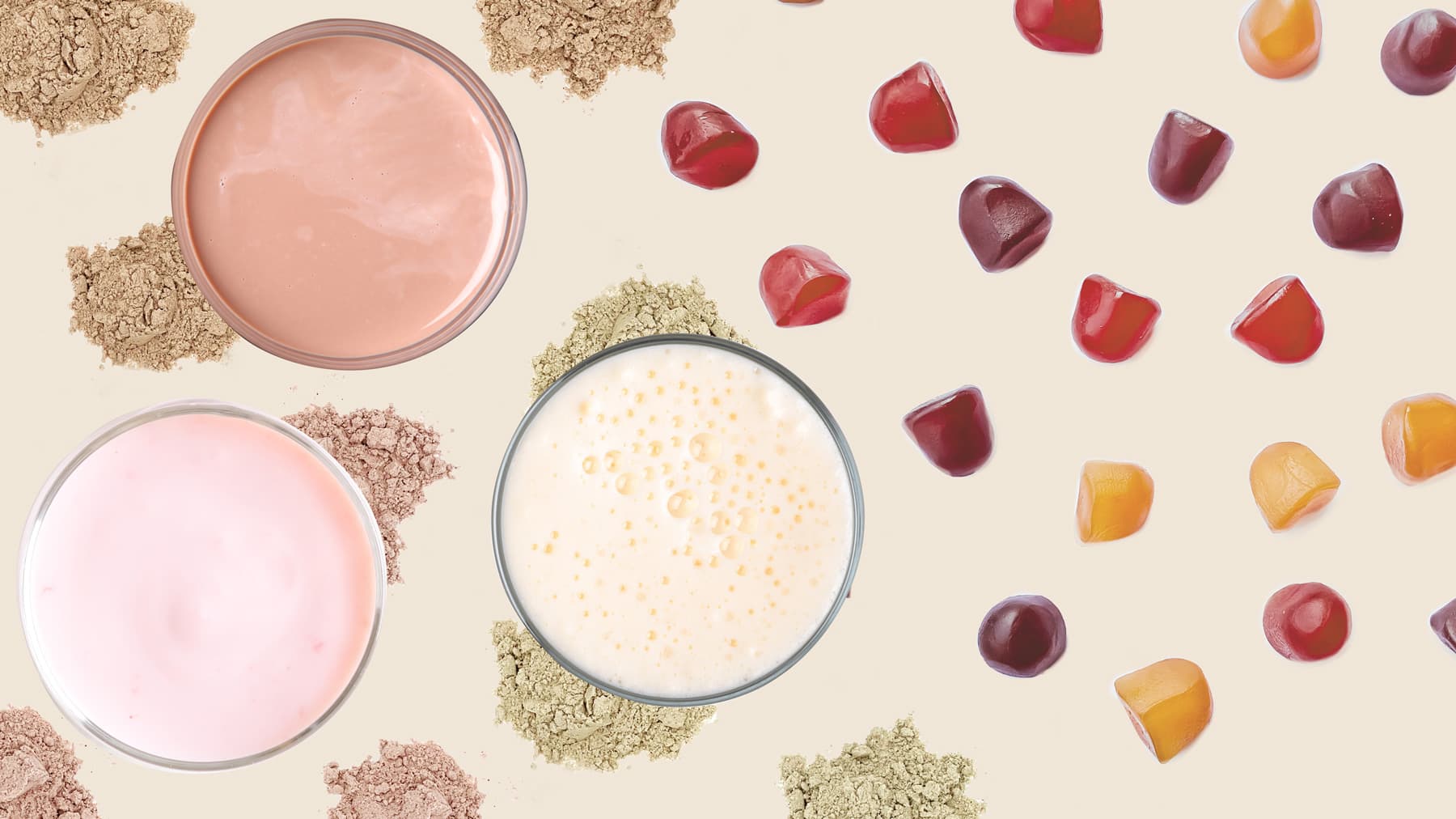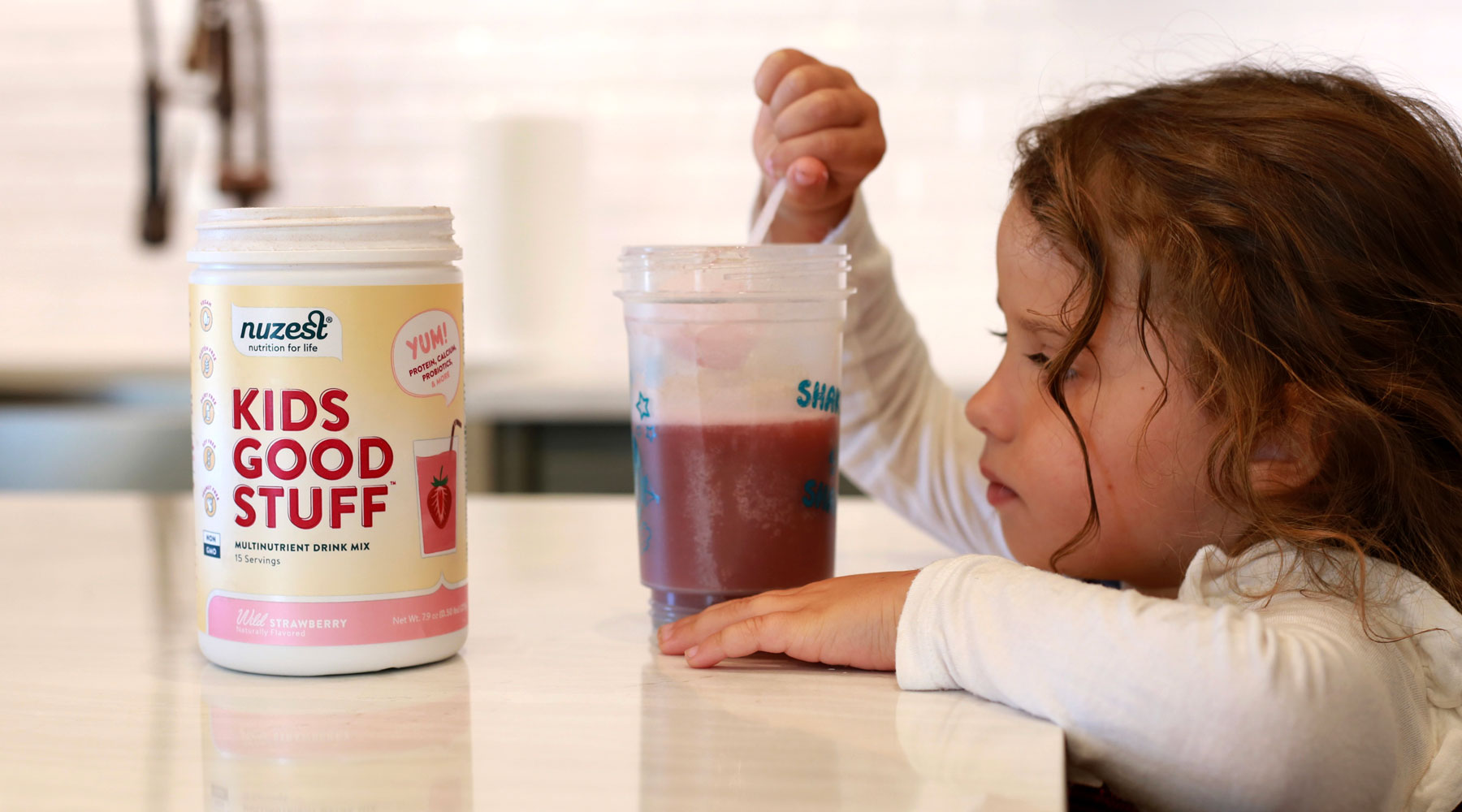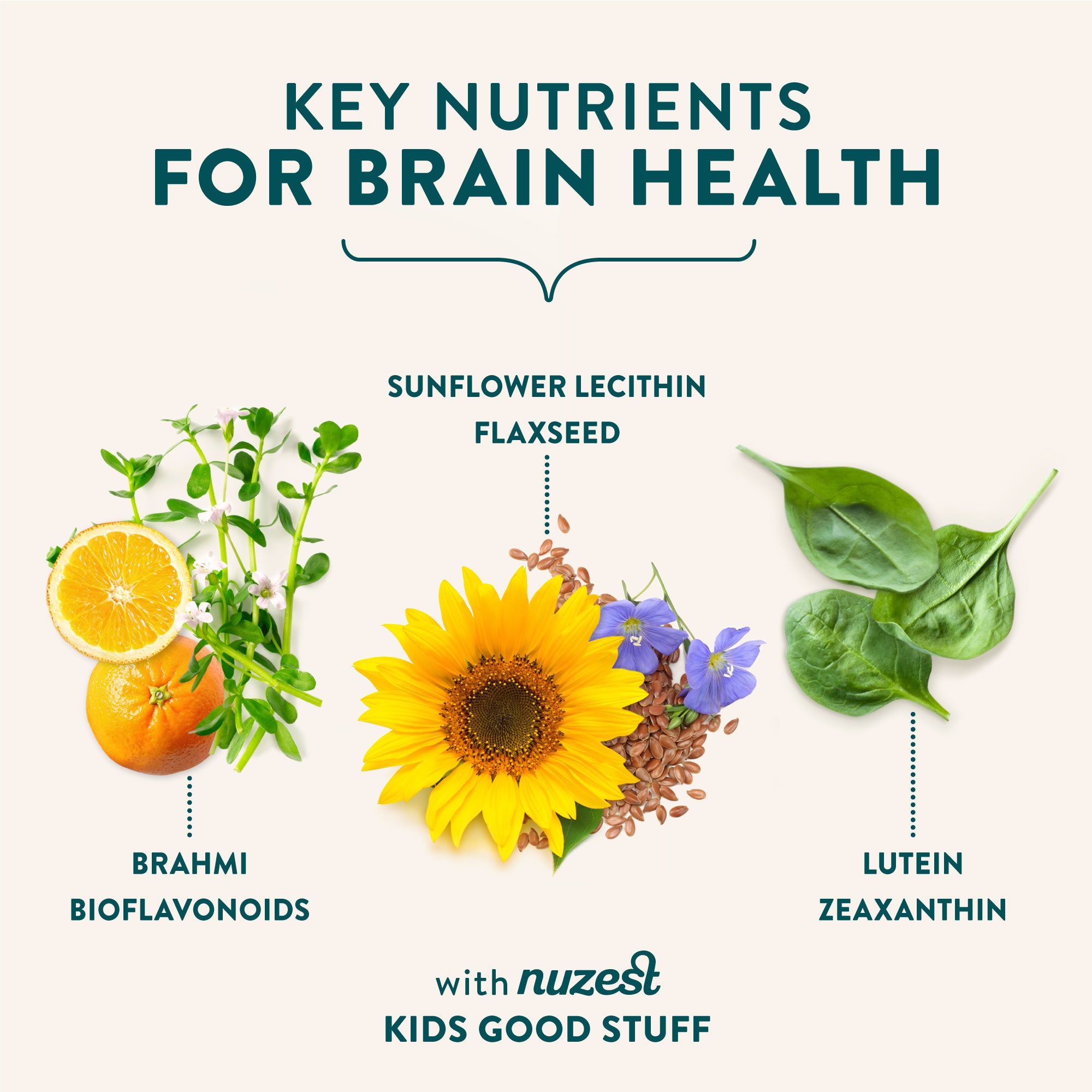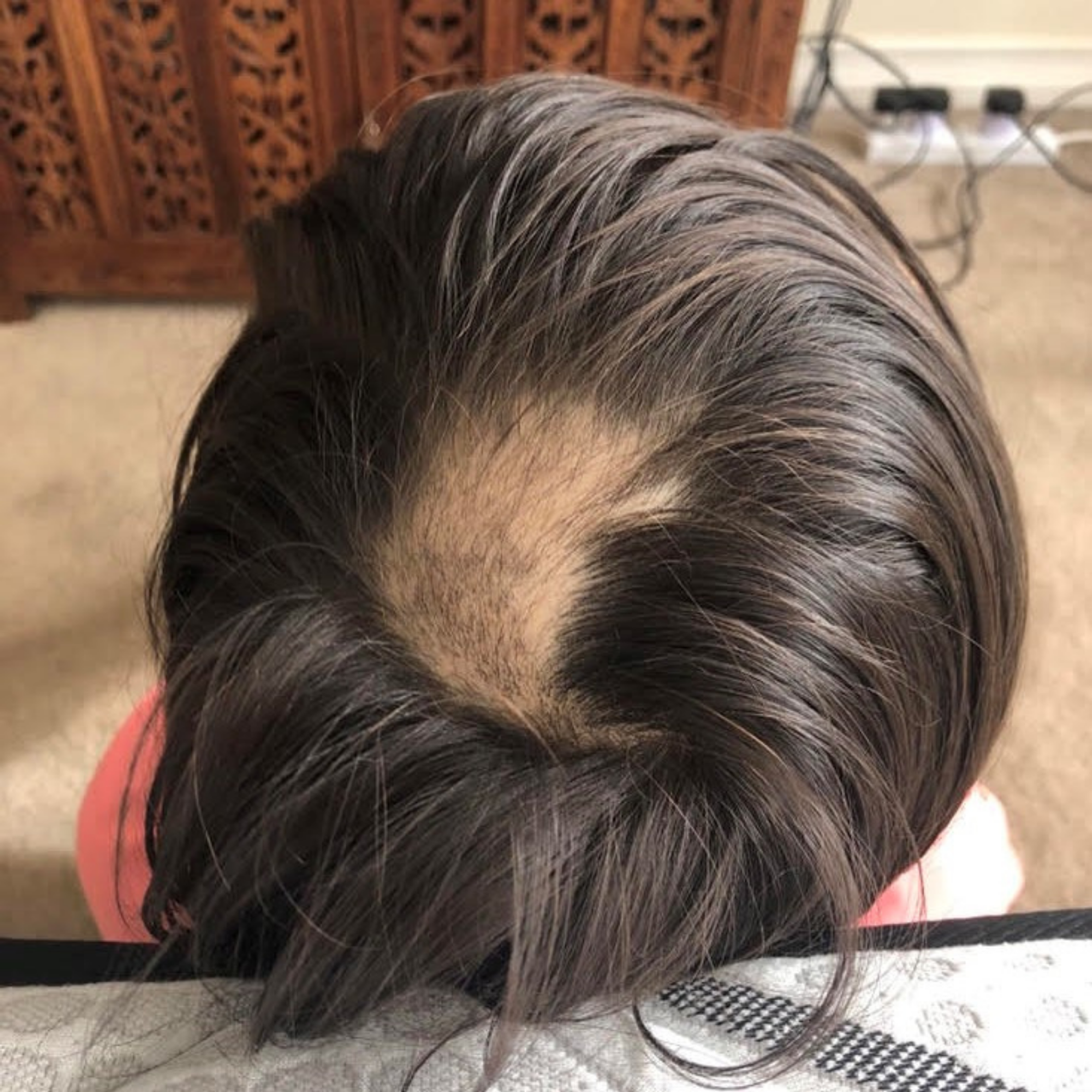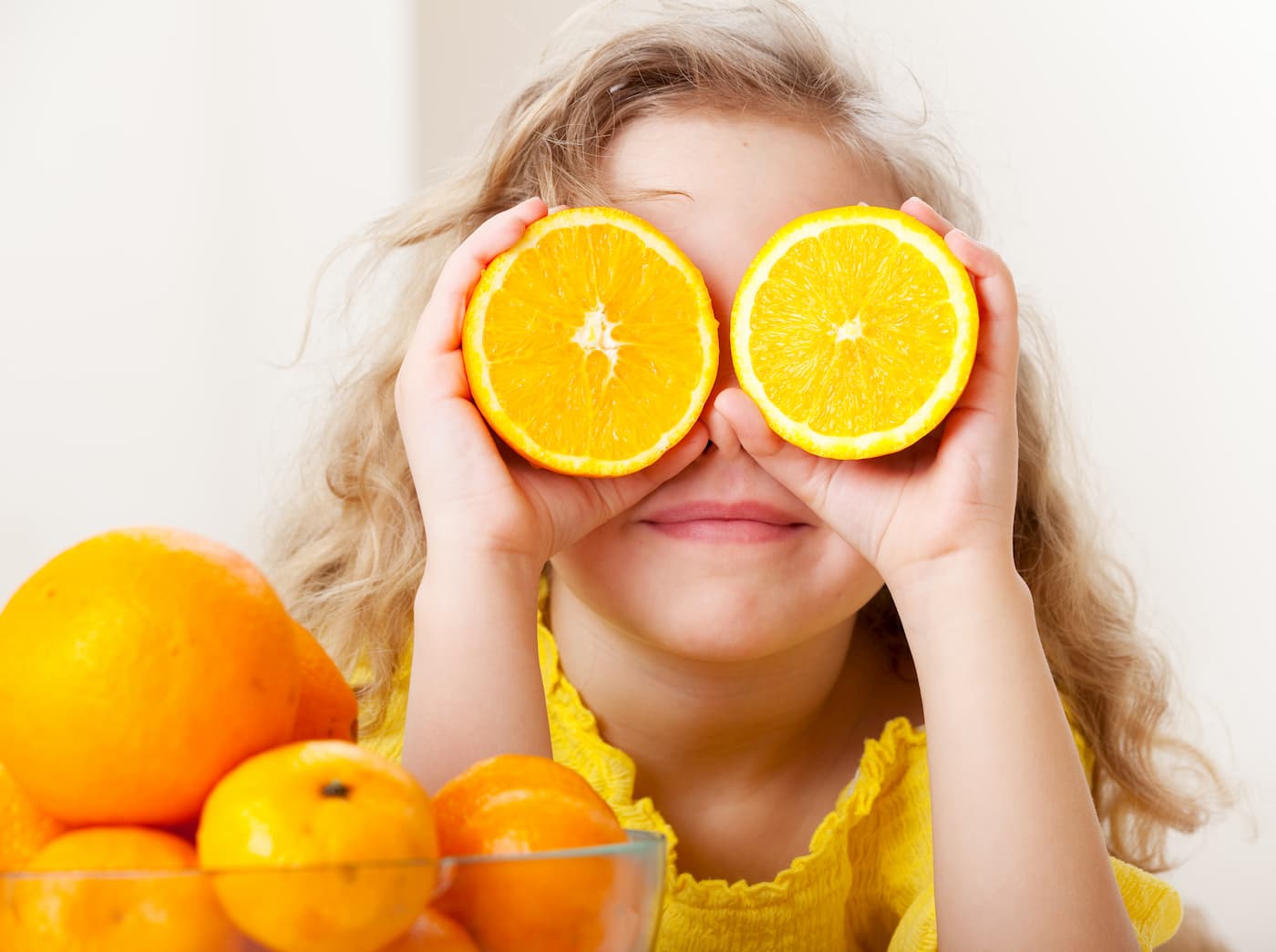There’s a saying that health is the cornerstone to a good life, and that a good life isn’t possible without it. Yet often, in the midst of busy schedules and a daily list of to-dos, nutrition gets lost in the shuffle. As the foundation for preventative care, nutrition remains one of the most powerful and useful ways to positively influence a child’s health.
Why is childhood nutrition so important? What health aspects does nutrition affect? How can a plant-based diet benefit children, and what are tips for implementing a vegan diet in their lives? In this Ultimate Guide to Childhood Nutrition, you’ll get answers to those questions and more, and come away empowered to implement simple, daily changes that improve the quality and experience of your family’s nutrition on a daily basis.
Table of Contents
- CHILDHOOD NUTRITION AFFECT ON HEALTH
- Immune System Health
- Gut Health
- Skin Health
- Brain Health
- Behavior and Mood
- Childhood Weight and Obesity
- Guide to Raising Vegan Kids
- Quick Guide to Vegan Pregnancies
- Vegan Toddlers and Young Children
- Is a Plant-Based Diet Healthy for Children?
- Raising Vegan Teens
- Kids Nutrition for Boys and Girls
- A Balanced Diet
- Children’s Supplements—What Supplements Should Children Take?
- Benefits of Multivitamins for Kids
- Myths About Multivitamins for Kids
- What’s the Best Type of Kids Multivitamin?
- Kids Multivitamin Powder Vs Gummy
- Kids Multivitamin Powder Vs Liquid/Drops
- Kids Multivitamin Powder Vs Chewable
- Tips for Dealing with a Picky Eater
- Easy Meal Prep for School Lunches
Childhood Nutrition Affect on Health
Childhood nutrition and health are closely linked because children’s primary school years are that of tremendous growth, as their social, emotional, cognitive, language, and motor skills undergo rapid changes. These changes are fueled by good nutrition, as nutritional needs exceed those of adults during this time. Childhood nutrition is the foundation for supporting the many facets of good health. Of all the nutrients available, which nutrition is required for height growth? Protein, followed by minerals Vitamin A, D, and calcium are essential for growth.1
So how do you promote childhood nutrition and nutritional needs during this important time? As with all health-related goals, being proactive by making positive dietary and lifestyle choices is key. Also, it’s important to look at nutrition from a holistic perspective while addressing the following aspects of health: the immune system, gut health, skin health, brain health, behavior, and mood are the aspects that influence a child’s overall health and wellbeing.
Immune System Health
A strong immune system is strongly tied to a healthy nutritional lifestyle. Diets consisting of processed foods, as well as nutritionally-poor foods and drinks, can have a measurable impact on the immune system,2 and unfortunately, recent data suggests that many children are not getting adequate amounts of certain key nutrients, such as calcium, DHA, iron, and vitamin D.3,4 Although certain factors, such as genetics and environment, also play a role, nutrition is an area parents can have greater influence over, particularly when children are young.
Gut Health
Immune health starts in the gut, with more than 70% of immune cells living there.5 And since a nutritionally deficient diet can compromise immune system health and increase susceptibility to “leaky gut” along with its resulting health issues,6 what can you do to address gut health in childhood? Diet plays a significant role here as well, specifically a diet with a wide diversity of food sources.7
Skin Health
As the immune system is linked to gut health, so too is gut health linked to skin health. Called the gut-skin axis,8 gut health influences skin health, and often, gut-related autoimmune diseases present with skin-related symptoms, ranging from acne and psoriasis to alopecia areata. This is where a nutritionally-dense diet can have a significant impact, as a diet rich in vitamins and minerals can help restore the gut to homeostasis, in turn improving skin health. Specifically, Vitamins D, C, E, and K have been found to support a healthy skin appearance and feel.9
Brain Health
Given that our brain’s energy requirement is nearly 20% of our total daily energy needs,10 when we talk about fueling our children’s bodies, we should also be thinking about ways to fuel their brains as well. A brain-healthy diet consists of:
- Whole grains (the low glycemic index kind of whole grains, like oats, legumes, and rice)
- Fruits, including antioxidant berries, citrus fruits and bananas, as well as veggies
- B vitamins from legumes, nuts, and dark, leafy greens
- High quality protein sources such as nuts, seeds, and legumes
Since nutrient diversity is key to gut health,11 giving your child a well-rounded diet with many different kinds of whole foods can have a tremendous impact on their ability to learn, think, and grow.
Childhood nutrition and mental health also have a strong relationship. Studies have shown that children with poorer mental health also had unhealthy diet patterns,12 but that increased intake of fruits and vegetables is associated with improved overall mental health.13 Sleep is another essential component for good mental health, with studies showing that increased sleep is associated with improvements in depression, anxiety, and psychological well-being.14 Sleep quality also influences children’s energy levels, blood pressure, and weight.15 While diet has a measurable impact on energy, a good diet without adequate sleep is like pouring gas into a tank with a hole. Both sleep and good nutrition have an impact on daily energy levels, brain function, and overall health.
Behavior and Mood
Ever watch your child’s attention and focus shift, or their energy levels go into hyperactive mode when it’s getting close to mealtime, or they haven’t eaten in a while? That’s because hunger can increase the potential for behavioral issues.16 To help, provide better nutrition, avoiding artificial flavors and preservatives found in processed foods, while offering regular meals throughout the day, in addition to healthy snacks. Certain nutrients, like zinc, iron, and omegas are also important in supporting your child’s positive behavior, as well as contributing to a good mood.
Childhood Weight and Obesity
Obesity among children continues to increase, with rates rising 1%, from 19.3% in 2019 to 22.4% in 2020.16 With the increased risks obesity brings, such as chronic diseases like diabetes and asthma, it’s important to address nutrition during childhood, nourishing your child with a balanced diet rich in vegetables, fruits, low GI grains, and high quality protein sources. Reducing the chances of obesity is equally dependent on avoiding excess sugars and “junk” food, as well as including a nutritionally-dense diet.
Nutrition for avoiding childhood obesity consists of foods such as a rainbow of fruits and veggies, legumes such as lentils and chickpeas, nuts and seeds like chia, almonds, walnuts, and flax. The healthy fats found in avocados, olive oil, and whole grains like quinoa, oats, wild rice, and barley should also round out the foods included. And don’t forget the physical activity! While daily amounts vary by age, experts agree that screen time should be capped at two hours a day in order to limit sedentary activity.
Guide to Raising Vegan Kids
Whether you’re transitioning your family to a plant-based lifestyle or already eating a vegan diet, raising vegan kids presents unique challenges. And how do you approach pregnancy? Is a plant-based diet healthy during pregnancy? Let’s talk about these concerns and discuss some of the benefits eating a vegan diet can have on you and your kids.
Quick Guide to Vegan Pregnancies
A vegan pregnancy is entirely possible, and can include all of the key nutrients if you know where to look for sources of B vitamins, omegas, zinc, and iron. And some research suggests eating vegan during pregnancy may be beneficial, with some studies showing that vegan women have a lower risk of postpartum depression, infant mortality, or C-sections.17,18
When following a vegan diet during pregnancy, focus on eating sufficient amounts of these foods:
- Fermented / sprouted foods: miso, tempeh, natto, sauerkraut, and kombucha supply K2 and probiotics
- Fruits and veggies: eat the rainbow of colors, from squashes and peppers to eggplant, leafy greens, and darkly-colored berries, as these have beneficial plant compounds19
- Whole grains and cereals: spelt, quinoa, amaranth, and wild rice have high protein content20
- Plant-based B12 sources: tempeh, chlorella, and nutritional yeast all contain B12
- Calcium-fortified cereals, vegan milks, and vegan yogurts: these can help you reach your daily calcium needs
- Legumes: lentils, red beans, chickpeas, and peas are all excellent sources of fiber and protein, and their nutritional availability can be increased by soaking or sprouting21
- Tofu, tempeh, and seitan: these forms of non-GMO soy provide bioavailable sources of protein
- Nuts and seeds: get your daily zinc and iron by eating a variety of nuts and seeds, such as hemp, chia, flax, walnuts, and Brazil nuts
Vegan Toddlers and Young Children
Typically high in bulk but low in fat, vegan diets for early childhood development nutrition need to include quality fats and added extra calories to promote optimum growth and development. Make sure to include quality fats that make up 30-40% of the daily diet,22 in the form of nut butters, avocados, nut-based creams, full-fat soy milk, and tofu. Adequate iron, zinc, protein (aim for about 20 grams a day), and calcium / Vitamin D are equally important. These can come from:
- Dark, leafy greens like spinach, Swiss chard, almonds, and figs
- Tofu, legumes, and fortified infant cereal
- Nuts and seeds
- Soymilk
Don’t forget to supplement with B12! Food sources might include nutritional yeast and tempeh, but supplementation can help ensure your toddler or young child is getting enough each day.
Is a Plant-Based Diet Healthy for Children?
In addition to being better for the environment by reducing your carbon footprint23 and helping to reduce the environmental impacts of meat,24 a plant-based diet supports healthy weight25 and immune system health, while lowering inflammation markers.
Raising Vegan Teens
Like with younger kids, raising vegan teens involves planning in order to keep an eye on protein, iron, and zinc intake, since teens' needs for these nutrients are higher than adults.26 Remember too to include B12 supplementation, with a daily recommended dose of five micrograms for children up to age 25.27
Kids Nutrition for Boys and Girls
Girls and boys do have different nutritional needs, though they do overlap in a number of ways. For instance, girls during puberty may be at increased risk for anemia if they aren’t getting adequate iron in their diets. And boys generally require a higher number of calories per day than girls (though this depends on activity levels). Both boys and girls need greater caloric intake during higher growth periods, and both require greater amounts of calcium, zinc, and folate.28
A Balanced Diet
When thinking about childhood nutrition, the goal is not to eliminate every processed food all the time—the goal is balance. Many find the 80/20 rule helpful, where nutritious foods are eaten 80% of the time, with treats making up the other 20%. To follow the 80/20 rule, practicing healthy food habits are important, like giving greens to kids regularly and limiting snacks to once or twice a day, making meals the main source of daily nutrition. But how do you teach your children healthy eating when they aren’t used to eating that way? Setting an example by limiting sugars and processed foods, while replacing them with nutritionally dense ones, goes a long way to showing your kids you are as committed to healthy eating as you’re asking them to be. Other healthy eating tips for you and your child include:
- Cooking Together: getting kids in the kitchen, involving them in meal-making by picking out recipes together, and prepping and cooking together can be one of the best ways to improve “buy-in” and get kids to see the value of healthy eating for themselves.
- Practicing Healthy Eating: we can’t expect our kids to eat healthy if we’re not willing to. By practicing healthy eating ourselves, we set the example we want to see.
- Make it Fun: who said eating healthy was boring? Make it an adventure by trying our recipes that interest you and tasting different foods prepared in different ways.
- Include Treats: you can make healthy treats without added sugar, experimenting with various substitutes to find ones you and your kids really love.
Children’s Supplements—What Supplements Should Children Take?
While diet can compromise the bulk of your child’s nutritional needs, many American children just aren’t getting sufficient Vitamin D, iron, calcium, or DHA.29 For this reason, experts do recommend that children 4 to 13 take a daily multivitamin containing 100% of the daily value of the most common vitamins and minerals.30 These include, but aren’t limited to, probiotics and vegan children omega 3s, like chia and hemp seeds or walnuts. If you’re worried about what happens when you eat too many children’s vitamins, make sure you avoid options that are sugar-laden, which might lead your child to want to overeat them. In general, finding a good quality children’s multivitamin can help round out any nutritional concerns, especially for picky eaters.
Benefits of Multivitamins for Kids
A good quality multivitamin can have wide-ranging benefits. From helping to infuse their daily diets with the magnesium, protein, and iron to help them sleep better, to better energy levels, adding a product like Kids Good Stuff can help address kids’ nutritional needs, particularly those who may have sensory processing or avoid certain foods because of allergies or intolerances. All the pillars of health, including brain health and skin health, as well as behavior issues stemming from nutritional deficiencies such as hyperactivity or inattention, can be a foundational part of their overall health and well-rounded daily diet.
Myths About Multivitamins for Kids
Multivitamins aren’t absorbed by the body. All supplements are “all natural.” In addition to the myth that your vitamins and minerals should come only from food, these other misconceptions about multivitamins can keep parents and kids from accessing quality nutrition or the right kind of multivitamins. Many kids’ multivitamins contain synthetic ingredients or contaminants, and some ingredients to watch out for in traditional children’s multis include hydrogenated oils (these increase the “bad” cholesterol,31 artificial dyes and colors.
What’s the Best Type of Kids Multivitamin?
The main types of kids multivitamins are powders, gummies, liquid, and chewables. But is one preferable to the others?
Kids Multivitamin Powder Vs Gummy
So, what do you choose for kids, a multivitamin powder or gummy vitamins? Gummies, which often have added sugar or fillers, may taste good, but they often have little nutritional value. A gummy multivitamin also can’t be consumed in any way other than their chewable form. Multivitamin powders, on the other hand, can be blended into smoothies, made into bars, mixed into oatmeal, or served in a number of different and interesting ways.
Kids Multivitamin Powder Vs Liquid/Drops
While some may say that multivitamin liquids or drops are more bioavailable than powders, there isn’t any research to prove this. While they are also convenient, liquid multis may also have the same questionable ingredients as gummies. Kids, especially those with specific food preferences, may also not find the taste of liquids agreeable.
Kids Multivitamin Powder Vs Chewable
The labels of other chewables, like gummy multivitamins, need to be read carefully to see if they contain preservatives, gluten, soy, or other unwanted ingredients. The multivitamin powder Kids Good Stuff is made without gluten, soy, dairy, or preservatives, and it has a robust and diverse nutritional profile, including 200 mg of calcium, 8 grams of protein and 3 billion probiotics. Kids Good Stuff also contains 11 different varieties of fruits and veggies, for whole-food nutrition.
Tips for Dealing with a Picky Eater
While feeding children in a modern world is an everyday challenge, picky eaters can prove particularly challenging. Sometimes due to allergies or sensitivities, they are more likely to have a limited palate and thus, diet. But there are a number of ways you can start exposing them to a more varied diet, including more fruits and vegetables. With time, you may find that the term “picky eater” no longer applies.
One of the best tips is for parents to decide when and what is served, while letting their child decide if and how much they’ll eat. Using colorful plates and cups, and cutting food into cute shapes are other good suggestions. Introducing foods repeatedly is also helpful, since it takes kids a number of times exposed to a certain food before becoming comfortable. More picky eater suggestions are offered in this interview with a pediatric dietician.
Easy Meal Prep for School Lunches
Coming up with varied school lunches all year long can quickly become boring, for both you and your child. Thankfully, there are a number of easy meal prep ideas.
- Bite-sized lunches: Kids love snack-sized food, but that doesn’t mean they can’t have a lunch with snack-sized foods that are nutritious! Vegan protein bars cut into smaller pieces, or cheese cubes, rounded out with almonds and some cooked vegan ravioli, can all be bite-sized options that are quick to prepare and fun to eat.
- Roll-ups: peanut butter and banana. Strawberry and coconut. Almond butter and apple slivers. Options for roll-ups are nearly endless. They’re easy to hold and easy to prepare.
- Batch cooking: batch cooking doesn’t have to just apply to dinners. Lunch items like cut fruit and veggies, pasta, chia puddings, and other vegan options can be prepped on Sunday for a week’s worth of fast lunches that are easy to throw together.
Healthy Recipes Your Kids Will Love
Good nutrition can be delicious! Healthy recipes abound that use foods your kids will love to eat. Treats in particular can easily be given a nutritional upgrade, thanks to hidden veggies, protein powder, and natural sweeteners like bananas, applesauce, and dates. Some of the recipes you can sneak healthy ingredients into include these Chewy Oat Bran Banana Protein Muffins, this Vegan Lentil and Coconut Soup, and Blueberry Chia Pudding.
Good nutrition starts in your kitchen, ideally by making foods together with your children in a fun and exploratory way. By incorporating a varied diet, cooking and creating recipes together, and utilizing high quality, targeted supplementation, you and your child will build a nutritional foundation that can last a lifetime.
References
- https://www.scientificamerican.com/article/how-much-of-human-height/#:~:text=The%20most%20important%20nutrient%20for,childhood%20is%20detrimental%20to%20height.
- https://pubmed.ncbi.nlm.nih.gov/30697214/
- https://www.cdc.gov/nchs/nhanes/about_nhanes.htm
- https://www.ncbi.nlm.nih.gov/pmc/articles/PMC8002201/
- https://pubmed.ncbi.nlm.nih.gov/33803407/
- https://www.ncbi.nlm.nih.gov/pmc/articles/PMC6790068/
- https://www.ncbi.nlm.nih.gov/pmc/articles/PMC6835969/
- https://pubmed.ncbi.nlm.nih.gov/27554239/
- https://pubmed.ncbi.nlm.nih.gov/11684391/
- https://www.brainfacts.org/brain-anatomy-and-function/anatomy/2019/how-much-energy-does-the-brain-use-020119#:~:text=How%20much%20energy%20does%20the%20brain%20require%3F,in%20terms%20of%20energy%20use.
- https://pubmed.ncbi.nlm.nih.gov/27110483/
- https://pubmed.ncbi.nlm.nih.gov/25208008/
- https://pubmed.ncbi.nlm.nih.gov/32227779/
- https://www.ncbi.nlm.nih.gov/pmc/articles/PMC5614772/
- https://pubmed.ncbi.nlm.nih.gov/12359814/
- https://stateofchildhoodobesity.org/data/
- https://www.ncbi.nlm.nih.gov/pmc/articles/PMC4561836/
- https://www.ncbi.nlm.nih.gov/pmc/articles/PMC6356233/
- https://www.ncbi.nlm.nih.gov/pmc/articles/PMC5613902/
- https://fdc.nal.usda.gov/fdc-app.html#/food-details/168918/nutrients
- https://fdc.nal.usda.gov/fdc-app.html#/food-details/168918/nutrients
- https://www.aafp.org/afp/2006/1101/p1527.html
- https://pubmed.ncbi.nlm.nih.gov/29853680/
- https://pubmed.ncbi.nlm.nih.gov/30496108/
- https://pubmed.ncbi.nlm.nih.gov/26138004/
- https://www.niddk.nih.gov/health-information/weight-management/take-charge-health-guide-teenagers
- https://www.ncbi.nlm.nih.gov/pmc/articles/PMC5188422/
- https://www.healthychildren.org/English/ages-stages/teen/nutrition/Pages/A-Teenagers-Nutritional-Needs.aspx
- https://www.mdpi.com/2072-6643/13/3/827
- https://lpi.oregonstate.edu/mic/life-stages/children
- https://pubmed.ncbi.nlm.nih.gov/19345947/

